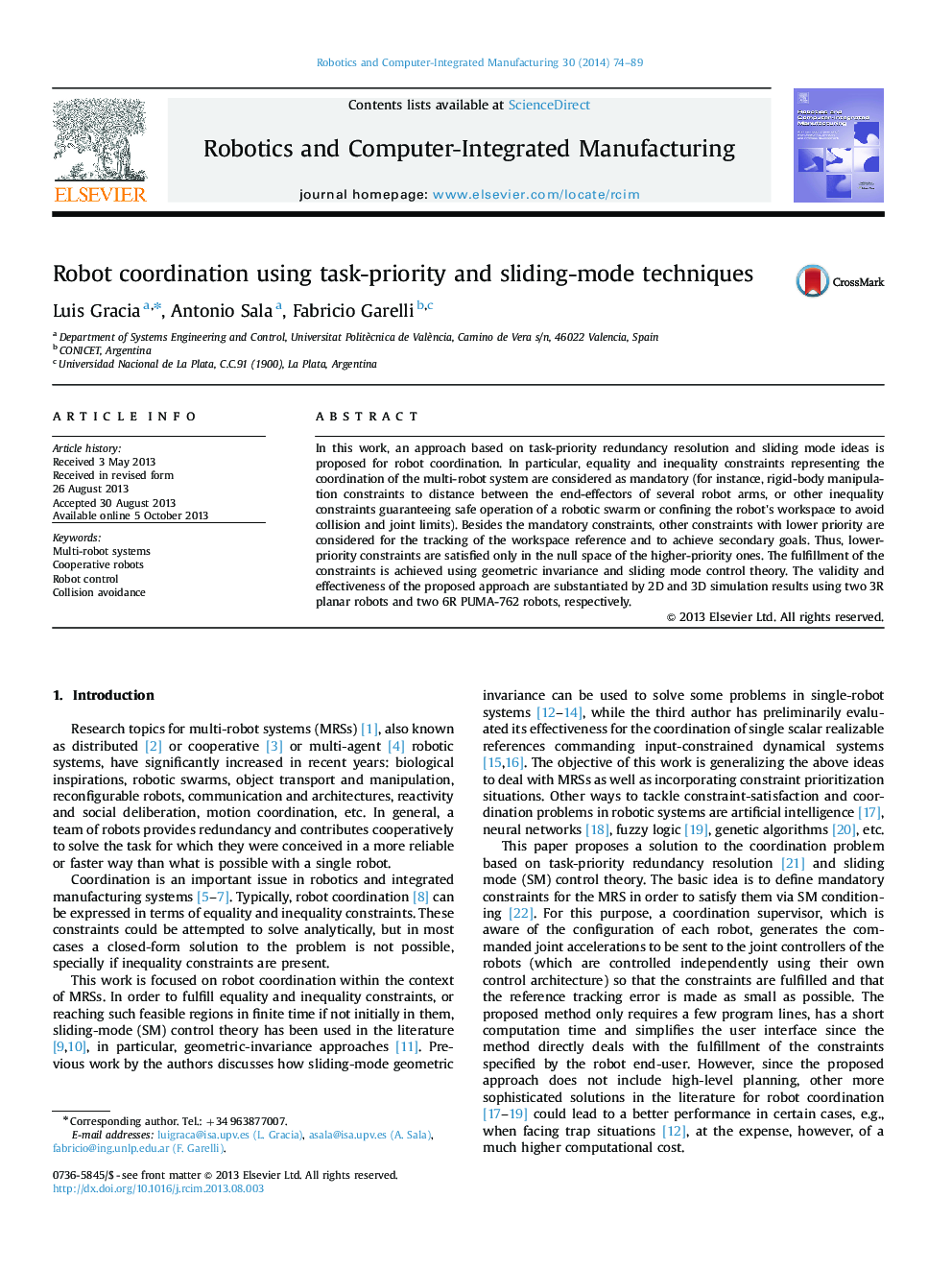| Article ID | Journal | Published Year | Pages | File Type |
|---|---|---|---|---|
| 413764 | Robotics and Computer-Integrated Manufacturing | 2014 | 16 Pages |
•We use task-priority and sliding-mode ideas for coordination of multi-robot systems.•We define mandatory constraints representing the robot coordination.•The method allows us to consider other constraints with lower priority.•The fulfillment of the constraints is achieved using geometric invariance.•We show the effectiveness of the method by simulation using two PUMA-762 robots.
In this work, an approach based on task-priority redundancy resolution and sliding mode ideas is proposed for robot coordination. In particular, equality and inequality constraints representing the coordination of the multi-robot system are considered as mandatory (for instance, rigid-body manipulation constraints to distance between the end-effectors of several robot arms, or other inequality constraints guaranteeing safe operation of a robotic swarm or confining the robot's workspace to avoid collision and joint limits). Besides the mandatory constraints, other constraints with lower priority are considered for the tracking of the workspace reference and to achieve secondary goals. Thus, lower-priority constraints are satisfied only in the null space of the higher-priority ones. The fulfillment of the constraints is achieved using geometric invariance and sliding mode control theory. The validity and effectiveness of the proposed approach are substantiated by 2D and 3D simulation results using two 3R planar robots and two 6R PUMA-762 robots, respectively.
